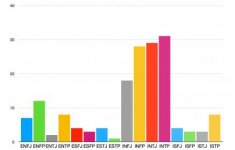Seymour
Vaguely Precise
- Joined
- Sep 22, 2009
- Messages
- 1,579
- MBTI Type
- INFP
- Enneagram
- 5w4
- Instinctual Variant
- sx/so
I’m taking a psychometrics graduate psychology course and as part of the course we have to create a test, have people take it, and analyze the data to see if the test looks reasonable (valid and reliable).
I was interested in how people relate to their feelings, so I created some questions and mixed in a few other very short tests. The result is a 107 question quiz that should take less than twenty minutes. At the end you are presented with results. It’s all self-report questions and relatively straight forward (I hope).
Feel free to share with others, because I need all the data I can get!
The link to the test is here:
Emotions Quiz
Let me know if you have any questions or problems.
I was interested in how people relate to their feelings, so I created some questions and mixed in a few other very short tests. The result is a 107 question quiz that should take less than twenty minutes. At the end you are presented with results. It’s all self-report questions and relatively straight forward (I hope).
Feel free to share with others, because I need all the data I can get!
The link to the test is here:
Emotions Quiz
Let me know if you have any questions or problems.

